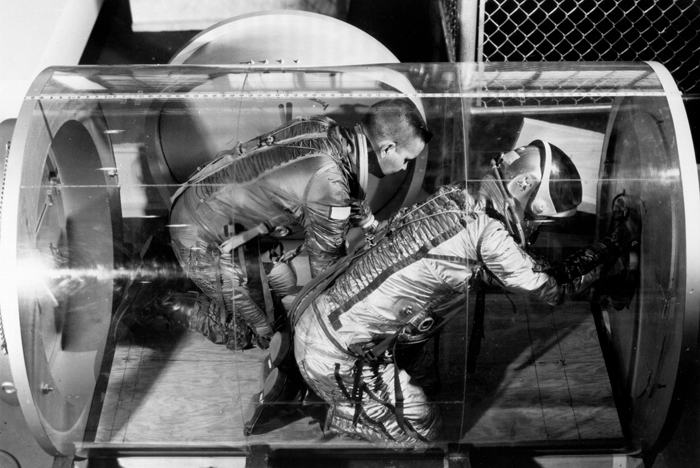Space History Photo: Airlock Testing

In this historical photo from the U.S. space agency, National Aeronautics and Space Adminstration's Langley Research Center scientists use this plexiglass space station airlock test model to determine astronauts' ability to move in and out through an airlock with the restraint of a pressurized suit.
Operations in space that call for crew transfer between spacecraft require airlocks of some kind. Mobility and performance in airlock systems must be determined to establish geometry and associated hardware for equipment suitable for manned space vehicle use. The airlock prevents artificial atmosphere loss when an astronaut transfers from one spacecraft to another or from the interior to the exterior in the performance of duties.
Each weekday, SPACE.com looks back at the history of spaceflight through photos (archive).
Get the Space.com Newsletter
Breaking space news, the latest updates on rocket launches, skywatching events and more!
Join our Space Forums to keep talking space on the latest missions, night sky and more! And if you have a news tip, correction or comment, let us know at: community@space.com.

The National Aeronautics and Space Administration (NASA) is the U.S. government agency in charge of the civilian space program as well as aeronautics and aerospace research. Founded in 1958, NASA is a civilian space agency aimed at exploring the universe with space telescopes, satellites, robotic spacecraft, astronauts and more. The space agency has 10 major centers based across the U.S. and launches robotic and crewed missions from the Kennedy Space Center in Cape Canaveral Florida. It's astronaut corps is based at the Johnson Space Center in Houston. To follow NASA's latest mission, follow the space agency on Twitter or any other social channel, of visit: nasa.gov.









